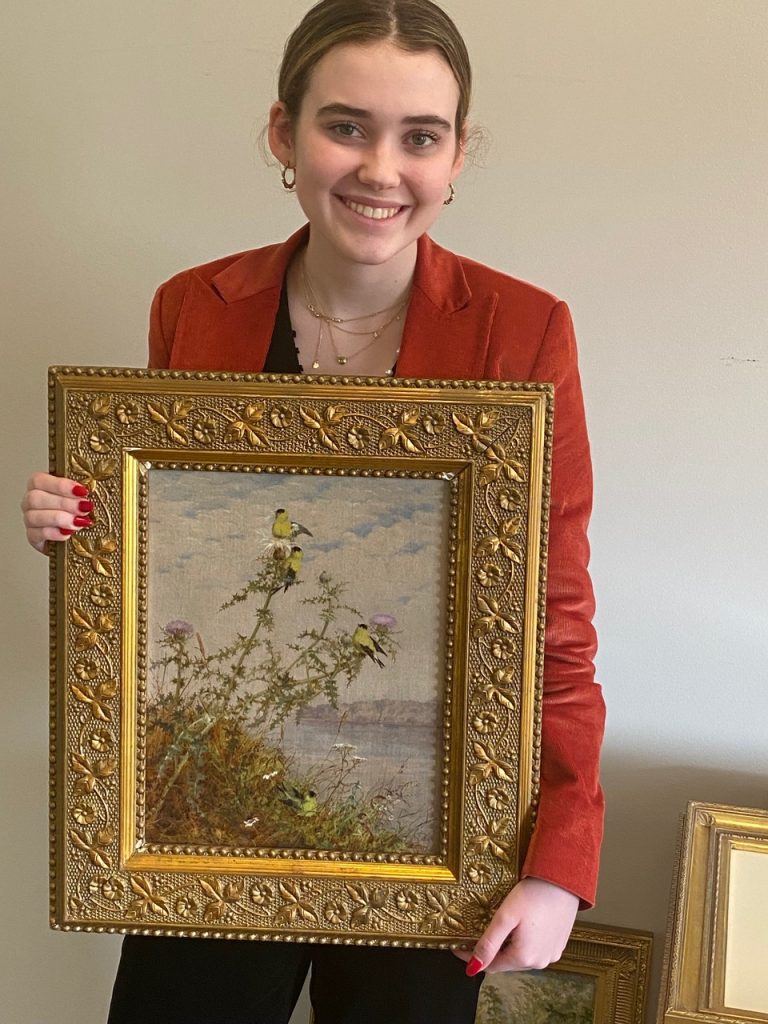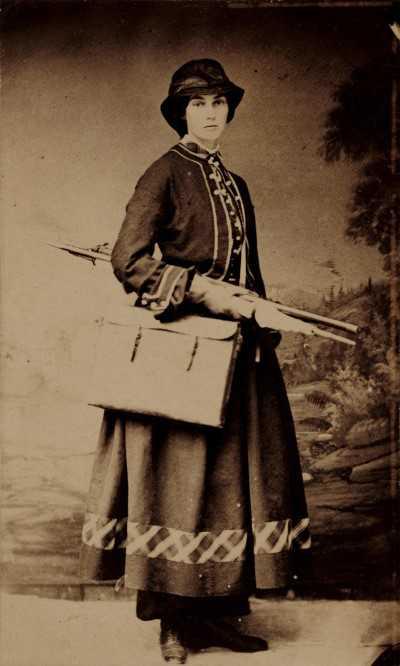
By Lucy Bulley
It’s difficult to forget a name like Fidelia Bridges. Of a list of twelve names of artists in the private collection that I’ve spent the past few months cataloging, this one stuck out to me the most. The name Fidelia is derived from the Latin word fidelitas, or “fidelity.” Fidelia perfectly embodies the meaning behind her name for her tireless devotion to painting Nature in its truest form, that is, in painstaking detail. The enormous care that went into her landscapes and still lifes was a hallmark of American Pre-Raphaelite Art. Fidelia is the only female Pre-Raphaelite artist, but she doesn’t stand apart from her male counterparts solely for this reason. Her career took a completely different trajectory because of her gender, which paved the way for a different kind of success.

In addition to her ties with the Pre-Raphaelites, Bridges is affiliated with a class of female artists that revolutionized the role and status of the watercolor medium in the United States. Women were more eager to try their hand at watercolor, which was dismissed as a “lady’s medium” until the founding of the American Watercolor Society in 1866. Often taught in the home, it was inexpensive and easily accessible. It also became a source of employment for these women, who decorated ceramics, and produced designs for art periodicals with guides for painting on china and other crafts involving watercolor. They gave drawing lessons, tinted lithographs, and decorated albums and place cards. The list goes on, as decorative design in watercolor became “a source of energy rather than a liability.”

As watercolor rose to prominence in the late sixties among the professionals who once rejected the medium, female artists began to have a place among their male counterparts at exhibitions. The number of women who showed at AWS and National Academy of Design exhibitions in the seventies skyrocketed: Fidelia and her colleagues were making up more than thirty percent of the total. But this percentage would drop as men increasingly involved themselves with the medium. Despite this, female participation in shows had become far more normalized.
Bridges’ entries to the American Watercolor Society beginning in 1870 transformed her career as an artist. Upon her return from Europe in 1868, she began to experiment with watercolor as the medium gained popularity, almost completely abandoning oil painting. Summering in Stratford beginning in 1871, she produced numerous watercolors, depicting meadows, flats, and wildflowers. She was also very taken by the birdlife in the saltgrass along the banks of the Housatonic River. Bridges went on to work for well-regarded chromolithographer Louis Prang in 1881 after entering a Christmas Card competition that year and winning. She became a household name and retained her position as staff designer until 1899.

Rose Breasted Grosbeak in a Thicket (undated)
Even after she stopped working for Prang, Fidelia’s continued to produce intricate botanical works, with a special focus on birds and flowers. In 1892 she settled permanently in Canaan.
Fidelia’s success story is surely unconventional, as one that couldn’t be considered elaborate or grandiose. Her life wasn’t marked by tumultuous romantic relationships and lavish parties as were those of other male artists who met with some degree of fame during their lifetime. Fidelia led a quiet life and gave much of her time to a number of art and literary groups. She wore black in the winter and gray linen in the summer.

Birds and Flowers (1877)
Her true life’s triumph was finding satisfaction in nature’s minutia. She traveled occasionally but spent most of her time studying her outdoor surroundings. Her delight for the outdoors is reflected in the painstaking detail in her art and also by her use of watercolor, an unforgiving medium known to be difficult to control. One mistake might mean starting over.
Fidelia Bridges’s story can serve as a lesson to anyone who has ever dreamed of success. Living a fruitful life and leaving some kind of lasting impact doesn’t necessarily equate to a loud and glamorous lifestyle, as many of us have been conditioned to believe. Leave it to an impeccable body of watercolor paintings to challenge this tired narrative.






